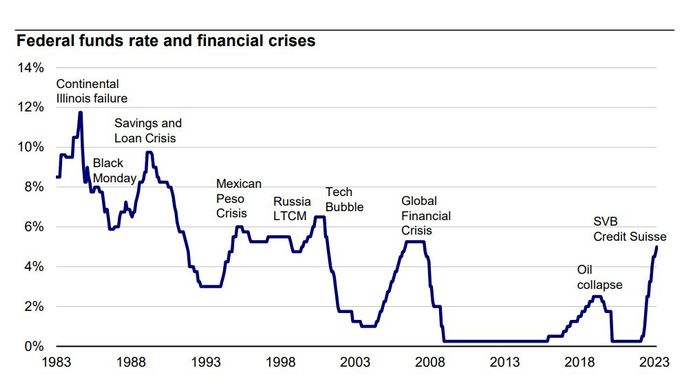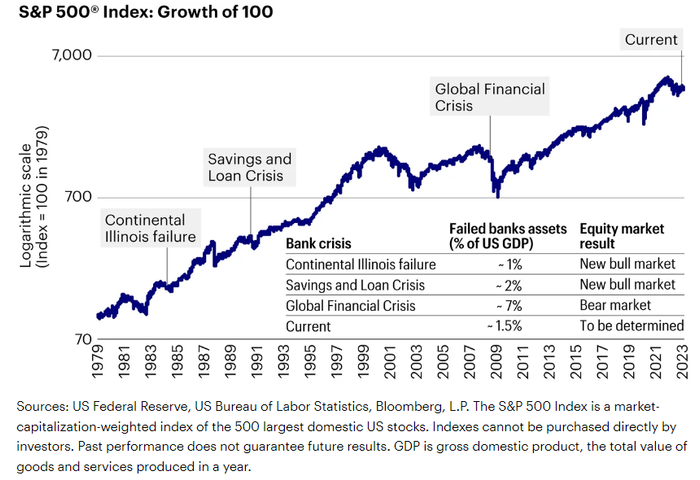Something “always breaks” when the Federal Reserve starts tightening monetary policy.
That saying appears to ring true yet again, with the collapse in March of Silicon Valley Bank and the Swiss government’s brokered sale of Credit Suisse to rival lender UBS Group UBS, -3.79%, another lending giant.
Since the 1980s, each Fed rate-hiking campaign has been associated with financial crises (see chart), including the 1987 stock-market crash on Black Monday, the demise in 1998 of hedge-fund giant Long Term Capital Management and the global financial crisis in 2008, according to a review by Invesco.

Fed hiking cycles have led to crises.
Federal Reserve
SVB, Signature Bank and the sale of Credit Suisse can now be added to the list.
But there also could be a silver lining for the stock market in that the worst might be over, according to Brian Levitt, global market strategist at Invesco, which oversees about $1.5 trillion in assets globally.
Levitt pointed out in a new client note that the S&P 500 index SPX, +0.33% has already tumbled more than 25% from its January 2022 peak to its October 2022 trough. That exceeds the median decline of 19.8% for the S&P 500 when looking at past major bank failures since the implosion of Continental Illinois National Bank in the early 1980s.
Stocks also tended to perform well a year after the Fed has ended past rate-hiking cycles. The central bank in March penciled in only one more rate hike in 2023, which would bring its policy rate to a range of 5%-5.25%, although Fed Gov. Christopher Waller on Friday said more rate increases might be need to tame inflation.
Still, Invesco’s Levitt found that several past periods of bank failures have marked the end of stock-market downturns, giving way to the beginning of a new bull cycle (see chart).

Is the S&P 500 ripe for a new bull market?
Federal Reserve, Bureau of Labor Statistics, Bloomberg
“That was the case in 1984 with the Continental Illinois failure, as well as in the early 1990s following the Savings and Loan crisis,” he said.
Of note, stocks tumbled in the aftermath of the global financial crisis. In its wake, the Fed kept rates ultralow from almost 15 years, setting up the current backdrop where many banks now hold billions — potentially even $2.2 trillion — in underwater Treasurys TMUBMUSD10Y, 3.594%, agency mortgage-backed securities and related bonds, after the U.S. central bank raised rates at one of the fastest clips in history.
JP Morgan’s Marko Kolanovic, chief global markets strategist, recently said he thinks stocks could fall 15% or more, if the U.S. enters a mild recession.
Stocks ended higher on Monday, with the Dow DJIA, +0.30% up 100 points, as earnings season kicks into a higher gear, with Netflix NFLX, -1.75% and Tesla TSLA, +1.10% due to post results in the next few days.
See: Why 5% interest rates might not derail the stock market or the U.S. economy










Add Comment